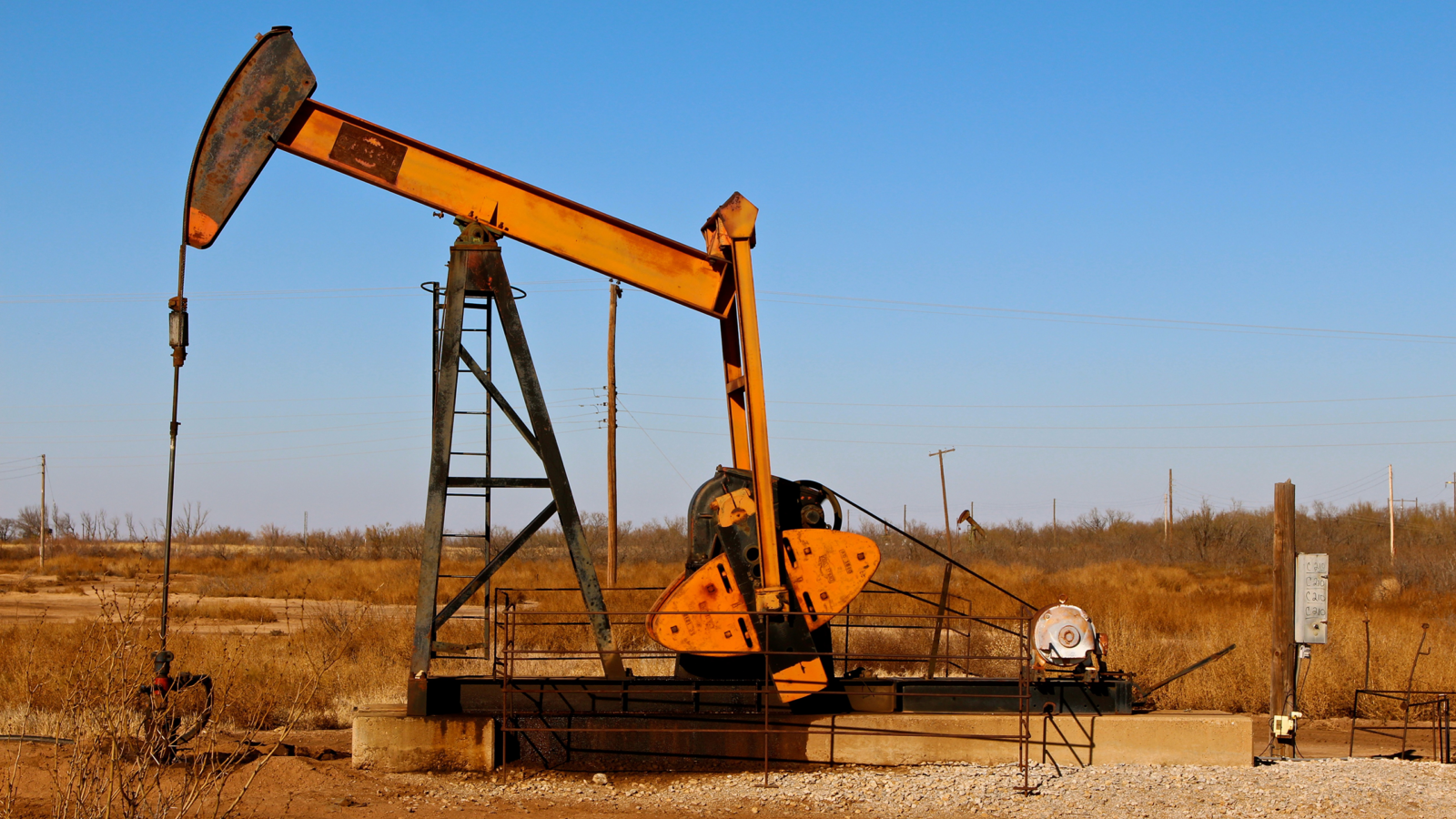Good morning.
Red Lobster’s $20 “endless shrimp” has caused endless problems for the chain, including not only $11 million in losses but also broken employee morale.
In an interview with CNN, Red Lobster’s new CEO Damola Adamolekun said the monster crustacean deal, which was originally a limited-time offer before becoming a year-round fixture in 2023, put staffers and customers on edge. “You stress out the kitchen. You stress out the servers. You stress out the host,” he said. “People can’t get a table. It creates a lot of chaos operationally.” Fingers crossed the Cheddar Bay Biscuits remain unlimited.
Whom Should You Believe About Energy Demand?

Depending on whom you ask, peak oil is either around the corner or beyond the horizon.
This year, the International Energy Agency (IEA) came out with a heartening prediction: Fossil fuel demand will peak in 2030, just six years from now. In recent months, however, fossil fuel producers and the Organization of the Petroleum Exporting Countries (OPEC) have rained on the IEA’s parade, offering wildly different projections. OPEC can’t even agree with the IEA about oil usage for this year, which is nearly over.
Written in the Wells
This summer, a handful of fossil fuel producers amended their guidance for how much oil and gas the world will need over the next few decades. ExxonMobil issued a forecast in August that said oil demand will remain unchanged through 2050; in July, BP said that while it still thinks oil will plateau this decade, demand will remain stronger for longer than it previously predicted. OPEC said late last month that oil demand will keep climbing for the next two decades. This is a long way off from IEA’s prediction of peak oil in six years’ time. So where is the disparity coming from?
Mark James, interim director of the Institute for Energy and the Environment at Vermont Law and Graduate School, told The Daily Upside that the IEA updated its modeling methodology in 2021, and its forecasts for peak demand have been trending downward. James added that in some regions and sectors, like the combustion engine sector, peak demand has already arrived. James said that when it comes to large oil concerns’ forecasts, there is an argument that companies need to “talk their book”:
- “They’re going to value themselves based upon the reserves that they have in the ground times what the forecasted oil price is going to be,” James said. “So in order to maintain that valuation, there’s a bias toward ensuring a forecast that says we’re going to continue to have demand that will take up and use the supplies that we have.”
- James added that many of oil firms’ forecasts rely on arguments that countries in the global south will experience mounting energy demand, but he believes it’s naive to assume that fulfilling that demand will be the same process as it was in the US or Europe. “In 1973 in the OPEC oil embargo, there weren’t alternatives,” he said. James pointed to Pakistan, which has seen a huge boom in consumers and businesses installing rooftop solar panels.
Stop-Start: China and India are two massive markets where fossil fuel producers have predicted an upswing in demand. On the bright green side, James believes that as renewable energy sources become cheaper and provide an alternative to growing economies, they will rapidly start to displace demand for fossil fuels. “I don’t think [fossil fuel companies] are properly grasping the way that energy transitions emerge, that it is not linear in the way that they develop,” James said.
Be Part of the $3.6B “Low Code” Revolution

As technology evolves, businesses need help keeping up.
That’s why EvonSys has dominated the $3.6B “low code” market for years – they already have more than 50 Fortune 500 clients worldwide.
Now, the acceleration of AI and other world-altering tech are creating even more opportunities for EvonSys to lead, and the company is opening investment to readers ahead of this potential inflection point. More and more businesses want common-sense software systems without paying a costly team of programmers to make them. EvonSys is in the perfect position to deliver, thanks to years of rapport with the world’s top names in tech, banking, and government.
Invest in EvonSys on their path to dominating the $3.6B low-code industry.*
It’s Chicken Big Mac Week in America
Unlike its sandwiches, McDonald’s wasn’t on a roll in the second quarter: Same-store US sales fell 0.7% year-over-year, their first decline since 2020.
However, data suggests recent value offerings have put the “gold” back in the golden arches and drawn cash-conscious American consumers back. This Thursday marks another opportunity to beef up the company’s bottom line, as McDonald’s launches a chicken version of its iconic Big Mac in the US.
Nuggets of Financial Wisdom
Companies across the retail world, including fast food, have widely acknowledged that consumers have had it with inflation and are in bargain-hunting mode. That’s good news for McDonald’s, whose brand luckily remains synonymous with “bang for your buck” despite the media outcry last year over its price hikes.
In 2023, a widely circulated TikTok noted none of the items on a McDonald’s “Dollar Menu” cost a dollar, and a Financial Times journalist stumbled upon a single franchise selling an $18 Big Mac Meal, prompting the New York Post to bray that the chain had been “slammed” for high prices. The company’s US president issued a public letter in May, attempting to downplay concerns (including those about the $18 meal), though the company conceded the average price of menu items had risen 40% in five years. Limited-time deals are bringing back the bargain:
- A $5 meal deal including a sandwich, four chicken nuggets, fries, and a drink — introduced in June for a “limited time only” and now extended through December — appears to have made a difference. Foot traffic at US McDonald’s locations calculated using geolocation data from mobile phones rose 5.4% year-over-year in August, according to Placer.ai.
- The Chicken Big Mac, which replaces the classic “two all-beef patties” with “two tempura-battered chicken patties,” will also launch as a limited product. Executives hope it can bolster a stock turnaround: McDonald’s share price was in a pickle by late June (falling 15% year-to-date), but has since erased those losses, and it’s now up over 2% year-to-date.
Where’s the Beef? Canada. That’s where the Chicken Big Mac was tested, along with the United Kingdom and Australia — it was so popular it had to be temporarily pulled from menus. The Great White North also offers a glimpse into the hamburger future: McDonald’s Canada is currently testing the Big Arch, a whopping 1,030-calorie double quarter-pounder layered with three slices of white cheese.
How Long Can China’s Bull Market Last?
Measures from China’s central bank have succeeded in stimulating Middle Kingdom markets, but will they be enough to reignite the world’s second-largest economy? Confucius said the wise never doubt — but maybe they should.
Turning the Corner?
China is grappling with a depressed job market, a struggling property sector, weak consumer spending, geopolitical tensions, and significant local government debt. Since Beijing ended its “zero COVID” policy in December 2022, there has been a growing demand for stimulus, which is finally being addressed.
In late September, the People’s Bank of China announced plans to:
- Cut the reserve requirement ratio by 0.5%, injecting about 1 trillion yuan ($142.5 billion) into Chinese markets.
- Reduce the minimum down payment ratio for second-home mortgages from 25% to 15%. Major cities like Beijing, Shanghai, and Shenzhen have already implemented lower down payment ratios for first and second homes, with Guangzhou removing all home purchasing restrictions.
- Launch a special lending facility to provide listed companies and their major shareholders with capital for stock buybacks and larger equity positions.
As a result, China has become a bull market. Last week, the Hang Seng China Enterprises Index surged 36% from a September low. Meanwhile, the CSI 300 and SSE Composite jumped roughly 25% and 22%, respectively, from a month ago. Overall, Chinese stocks saw their biggest single-day gains in 16 years last Monday.
Global investors have suggested it might be time to step back into China. “What we are telling our clients this week is that if you have nothing (in China) you may want to add some positions,” Luca Paolini, chief strategist at Pictet Asset Management, told Reuters.
The Long Game: However, this bull run might be short-lived, as China continues to grapple with economic uncertainty that may require aggressive fiscal change. That could be on the way, though: Reuters reported China’s Ministry of Finance plans to issue 2 trillion yuan of special sovereign debt to stimulate consumption and help local governments tackle debt problems. In an interview with Chinese publication The Paper, one economist said China’s government could double down on stimulus by raising investments in public projects. “As these projects get underway, they will create jobs, increase income for citizens, and unlock consumption potential,” said Jia Kang of the China Academy of New Supply-Side Economics.
Extra Upside
- Half Time: It’s been a decade since Google controlled less than 50% of the US search ad market, but researchers predict that run will end next year.
- Just Walk Out: Amazon is still trying to figure out the cashier-less grocery store experience.
- Get in the Game: Saudi Arabia’s Public Investment Fund could grow its stakes in Nintendo and other game companies.
Just For Fun
Disclaimer
*This is a paid advertisement for EvonSys’ Regulation CF offering. Please read the offering circular at https://invest.evonsys.com/.

